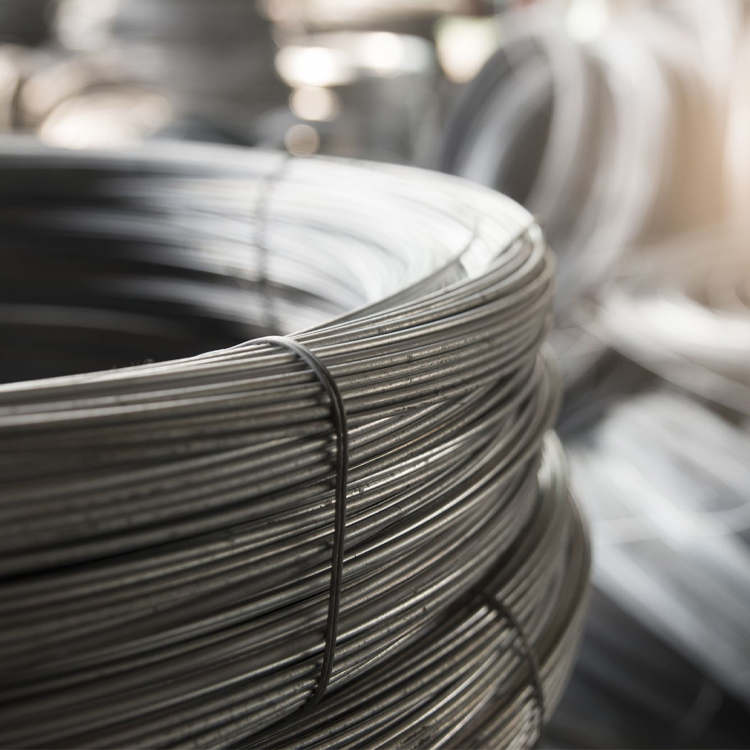

Stainless steel wires are commonly used in construction, electronics, and household appliance manufacturing due to their durability, maintenance-free nature, and high mechanical resistance. If you are looking for stainless wire varieties with different features and cross-sections, Oba Paslanmaz is here to meet your needs.
Why is Stainless Steel Wire Rustproof?
Stainless steel wires are commonly used in construction, electronics, and household appliance manufacturing due to their durability, maintenance-free nature, and high mechanical resistance. If you are looking for stainless wire varieties with different features and cross-sections, Oba Paslanmaz is here to meet your needs.
Why is Stainless Steel Wire Rustproof?
Rust resistance in stainless steel is achieved by adding chromium to the steel. Chromium, when in contact with oxygen in the air, forms a chromium oxide layer on the surface of the material. This invisible layer prevents the steel from further exposure to air. However, in highly corrosive environments, this layer can deteriorate, allowing rusting to occur. To enhance corrosion resistance, the chromium content can be increased. In some cases, adding nickel and molybdenum results in steel grades like 904L (1.4539), which offer even greater rust resistance.
Applications of Stainless Steel Wire
Stainless steel wires are woven and used in various applications due to their homogeneous mechanical properties, aesthetic surface appearance, long-lasting shine, and shape retention even at high temperatures. Produced in austenitic and ferritic grades, stainless steel wires are used in mesh, sieves, filters, baskets, springs, and machine parts across different sectors. They are also used in the oil and gas industry, paper production, the chemical sector, and food industries. Known as "chromium wire" or "weaving wire" in the market, stainless steel wires serve multiple purposes.
The most commonly used types of stainless steel wire are Chromium 304 and Chromium 316. Chromium 314, on the other hand, is ideal for applications involving frequent heating and cooling cycles at high temperatures. High-temperature-resistant stainless steel wires are preferred in industrial furnaces, particularly in conveyor belts of ceramic kilns.
Austenitic and Ferritic Stainless Steel
Austenitic Stainless Steel: Contains 10.5-26% Chromium (Cr) and 8-36% Nickel (Ni), known for high resistance to heat and chemical corrosion. This type is non-magnetic and highly ductile, allowing it to be welded and used across a wide temperature range. The most widely used grade is AISI 304, with variations like 316, 316L, and 316Ti for higher temperature resilience.
Ferritic Stainless Steel: Ferritic steels, unlike austenitic types, are magnetic and have low carbon content with 11-30% Chromium (Cr). The most common ferritic steel is grade 430, known for its durability but lower impact and weldability. These are typically more cost-effective and used in non-critical areas.
Stainless Steel Wire Pricing
Prices for stainless steel wires vary based on cross-section, grade, and hardness level. Available in soft (600-750 N/mm²), medium-hard (750-850 N/mm²), and hard (850-950 N/mm²) variants, they are sold in various dimensions from as small as Ø0.05 mm to as large as Ø15 mm. When purchasing stainless steel wire, consistency in quality across the length of the wire is as essential as price.
Theoretical Unit Weights of Stainless Wires (Gr/Mt)
| Diameter (mm) | Thickness Tolerance (mm) | Weight (Gr/Mt) |
|---|---|---|
| 0.05 | ±0.002 | 0.0003 |
| 0.10 | ±0.003 | 0.0006 |
| 0.30 | ±0.005 | 0.0018 |
| 0.60 | ±0.006 | 0.0016 |
| 1.00 | ±0.010 | 0.006 |
| 1.50 | ±0.020 | 0.009 |
| 2.00 | ±0.030 | 0.012 |
| 2.50 | ±0.040 | 0.015 |
| 3.00 | ±0.050 | 0.018 |
| 4.00 | ±0.060 | 0.024 |
For more detailed information, you can reach out to our team at Oba Paslanmaz, a long-established provider of stainless solutions.
You can contact us for more information about Stainless Wire.